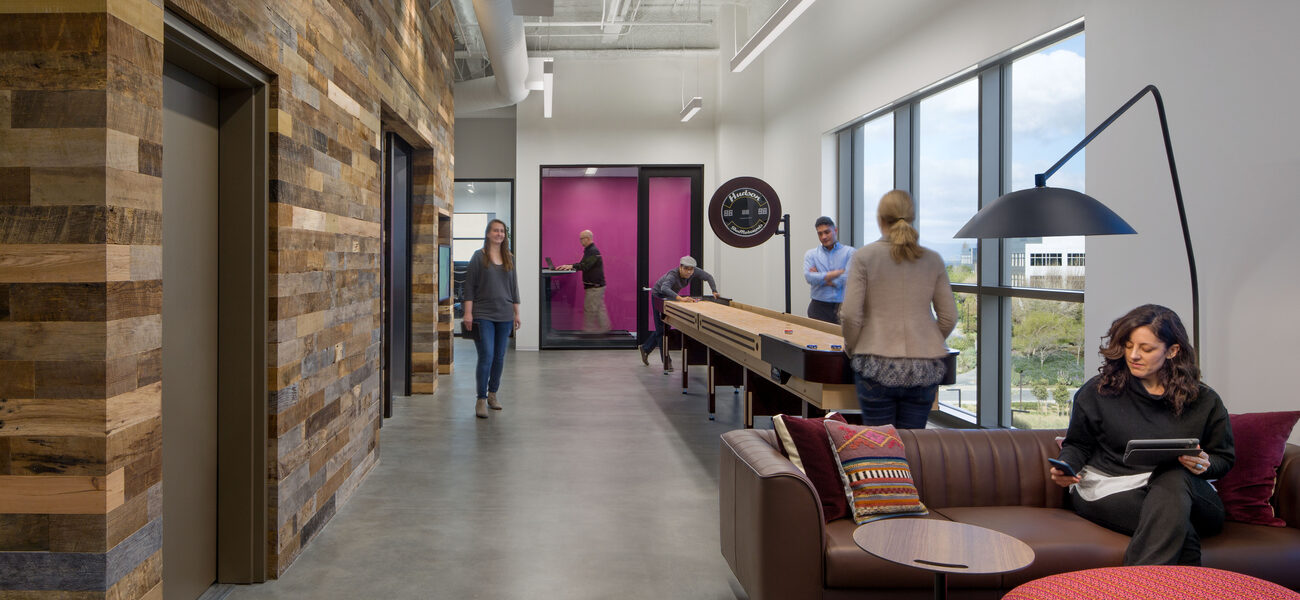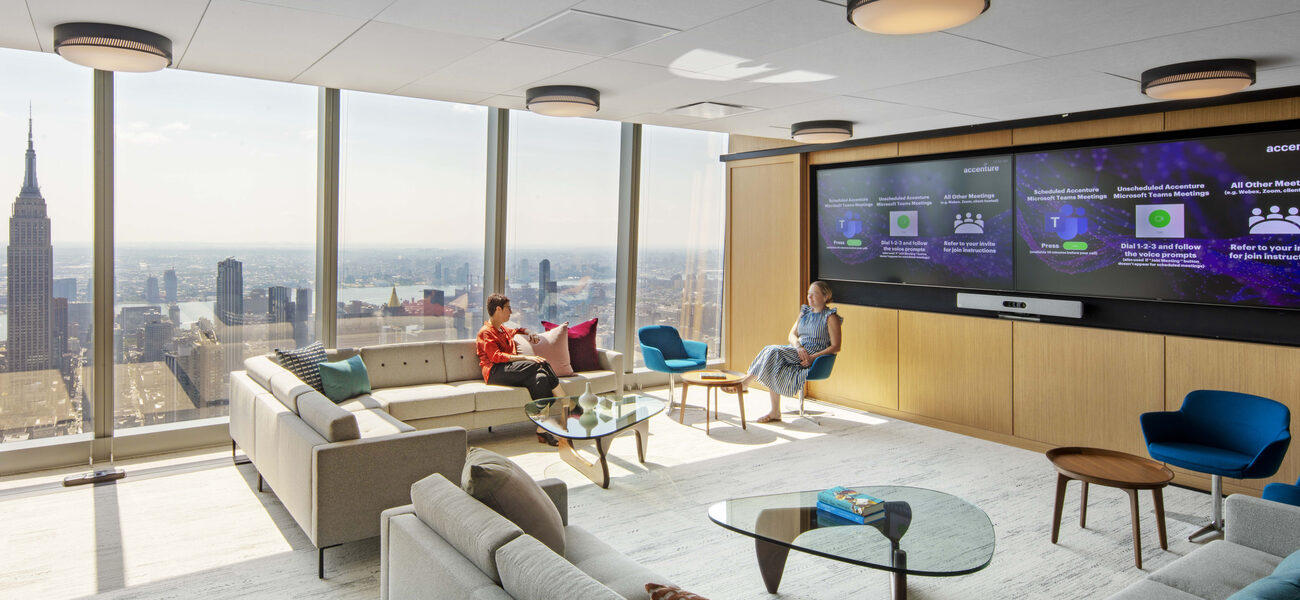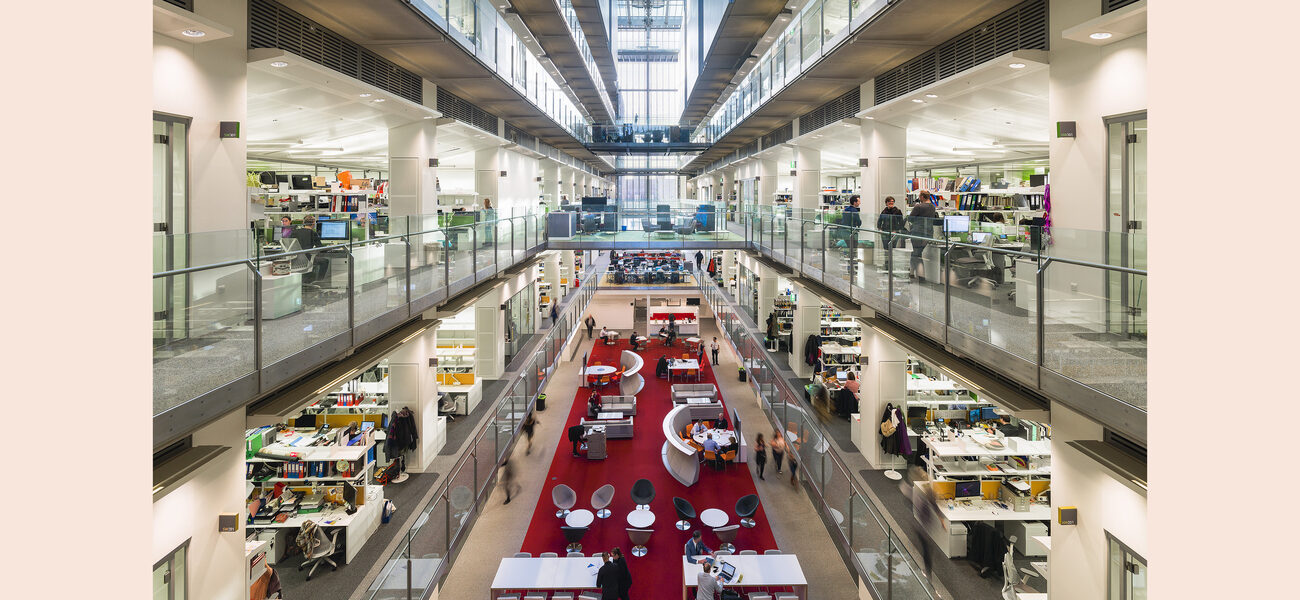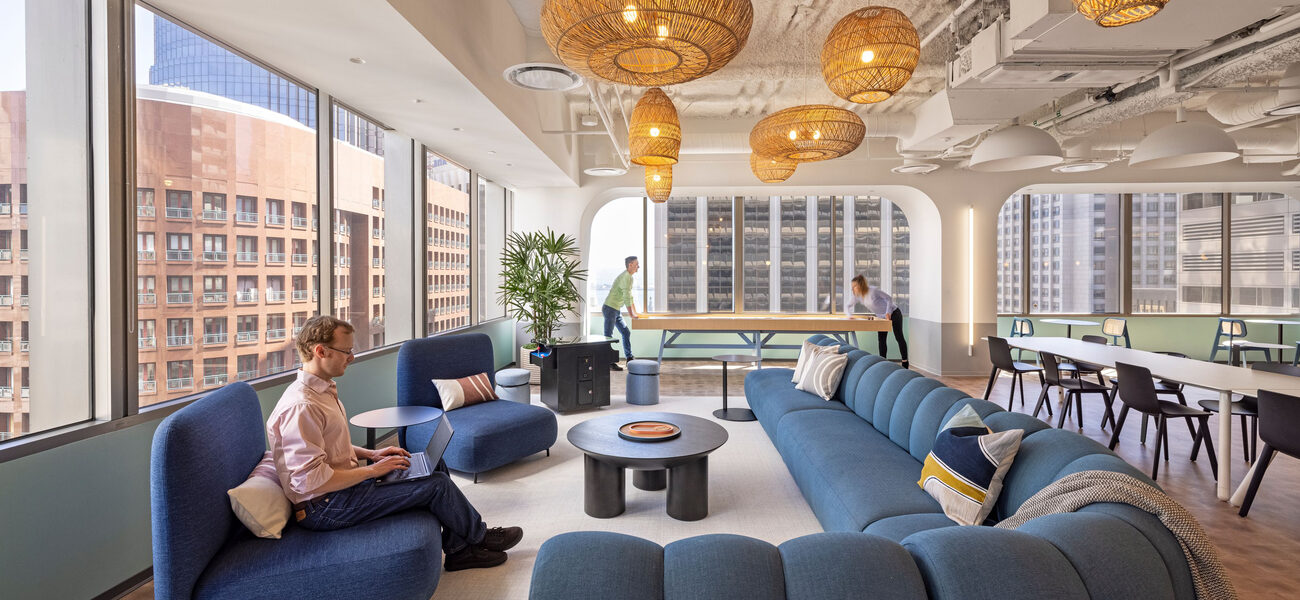In both the public and private sector, the pendulum has swung away from remote work, and many leaders want their employees to come back to the office more days per week. While good workplace design can help make workplaces commute-worthy, the success of any return-to-office strategy depends on a mix of operational protocols and design decisions, says Kay Sargent, director of thought leadership, interiors, at global design, architecture, engineering and planning firm HOK.
“The commercial real estate industry is being set up for failure,” warns Sargent. “There are people in the C-suite or the provost’s office who are looking to designers and asking us to create amazing spaces that people will want to be in. But the real reason that people are not coming back into the office is not because the space is horrible. It’s because they don’t want to do the commute and because they have invented their own work rhythms—they work for a few hours, take a break to go to the gym, work some more, stop to pick up the kids, then go back to work again in the evening.”
How do you get these people who have gotten so comfortable and accustomed to the rhythms of remote work to return to the office? What is the amenity that will bring them back? “The number one amenity is people,” says Sargent. “The easiest way to frustrate people is to ask them to come back to an office where they can’t interact in person with colleagues and managers. If people are commuting to an office to sit on video calls all day, that is the worst of both combined.” If management is going to ask or require that junior employees return to the office, Sargent believes the success of that return-to-office policy depends on company leaders returning to those same offices to provide in-person mentorship and professional development, and to make themselves accessible.
Taking a Nuanced Approach
Sargent notes that many companies tend to approach the idea of remote work as a binary choice, where everybody should be able to work from home or everybody should be in the office. She encourages organizations to take a more nuanced approach.
“Almost every profession has an element of apprenticeship where people learn on the job, but the importance of learning from others in close proximity is greater in some industries than others,” says Sargent. “In architecture or design, for instance, you really need to sit next to someone with more experience to listen and observe that person. If you isolate people from that mentorship in a fully or predominantly remote work arrangement, you make their jobs harder or limit their professional development. On the other hand, there are people engaged in roles that require intense concentration—crunching numbers or writing reports—where it may not be quite as important for them to connect with colleagues on a daily basis.”
Even if a role makes someone a good candidate for hybrid or remote work, Sargent observes that person may not have the appropriate personality, skillset, neurotype, or even the right setup at home to make remote work successful. “Ultimately, companies should have clear policies and guidelines for remote work,” says Sargent. “Managers should be encouraged to optimize for performance, not presence.”
Using Design to Make Spaces Enticing
While workplace design is not the sole factor determining the success of a hybrid workforce strategy, it definitely has a role to play. Sargent enumerates several ways in which design can act like a magnet to pull employees back to the shared space:
- Evoking a sense of belonging. “Ten years ago, I could walk into 10 different offices and have no idea what that company did, because office design tended to be extremely generic,” says Sargent. “Now, most offices are designed to be the physical embodiment of the company’s culture and mission.” She encourages companies to explore how they can use design to erase the lingering sense of isolation and burnout from the pandemic years and foster a sense of belonging. When a space reflects a company’s mission, that can give employees a sense of purpose and satisfy a social human desire to connect with something bigger than ourselves.
- Being true to yourself. Sargent notes that design should aim not only to give employees a great experience, but also to deliver authenticity. “Many people want to copy the design ethos of tech companies, but the average churn there is often less than two years,” says Sargent. “These companies will build apartments without kitchens across the street from their offices and then offer three meals a day in the corporate cafeteria because they don’t want their 20-something, new-grad employees to ever go home. But if you’re a pharmaceutical company where it takes scientists as much as 10 or 15 years to make a major discovery, you don’t want to burn anybody out in two years. You have a totally different demographic, and you want to create an environment that will enable 40-year-olds with families to maintain a healthy, balanced lifestyle so they stay for the long run.” Sargent advises clients to stop worrying about what everybody else is doing and understand their own organizational DNA before making big design decisions.
- Offering something people can’t get at home. Some people who are working from home have poor ergonomic setups. Some people don’t have access to the latest technology at home. Other people may be working in dim environments, putting up with noise from roommates, or stuck in a windowless space. These are all areas where companies have opportunities to offer something better. They can create tech-infused spaces and give employees choices in terms of sensory inputs like sound, temperature, lighting, and proximity to others. “Some people who live by themselves and have been working from home for a long time may have gotten used to being in sound vacuums,” says Sargent. “On the flip side, parents with young children at home may have had the opposite experience with noise levels. Either way, a lot of employees have worked in extreme situations that may have desensitized them to stimuli or heightened their sensitivity. The challenge is to create spaces that address all these environmental issues and factors so that people can function at their highest levels.”
- Helping employees put their hobbies on steroids. Sargent also notes that many people have picked up home-based hobbies while working remotely. They may have started baking sourdough bread, joined a virtual book club, or (as Sargent did) assembled a collection of 150 house plants. “Companies need to ask themselves what workers feel like they are leaving behind when they return to the office,” suggests Sargent. “Can we make it so that going to the office doesn’t mean giving up your hobby but actually involves putting it on steroids?”
At Sargent’s own office, HOK designated one day a week where any employee could use expensive fabrication tools or 3D printers in a modeling shop that was normally off limits. “People want to come into our office on Wednesdays now because they have access to all this great equipment,” says Sargent.
Many organizations have underutilized spaces that could be repurposed to build a sense of community that draws people back to the workplace. That could mean transforming a conference room into a library where avid readers can gather in the evenings to have book clubs. Or it could mean designating a small space as a music room or a podcasting studio for folks who want to try creating their own shows.
“The important thing is to make sure that whatever you offer doesn’t duplicate what people already have at home,” advises Sargent. “Create purposeful spaces that give people opportunities to expand their interests while connecting with others and rebuilding a sense of community in the workplace.”
Benefits of Choosing Access Over Ownership
Sargent recognizes that some companies may be concerned about finding either the space or the financial resources to revamp their workplaces in ways that will draw employees back to the office. Still, she says that organizations can both liberate space and save money with a simple mindset shift. “Access is the new ownership,” she says. “You don’t have to provide and own everything your team needs; you just need to provide access to it. Look at any 20-story office building in a major city and you’ll probably find a tricked-out conference room on every floor. Somebody probably paid half a million dollars or more per conference room to equip them with the latest conferencing technologies, but many of these spaces are used as little as one day per week. This redundancy is absurd.”
Sargent suggests that office building tenants could agree to pay on a per-use basis for access to one or two shared conference facilities. This model would allow companies to save money by saving space and then reinvesting some of those savings to improve their workplace in ways that make it a desirable destination for employees.
“Ultimately, finding success with hybrid working means that companies need to focus on both operational policies and workplace design,” says Sargent. “That starts with understanding your organizational DNA, your culture, and the functional and environmental needs of your team so you can create spaces and protocols that support and advance your working goals—whether those involve hybrid, remote-first, or shared-space strategies.”
By Aaron Dalton




